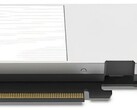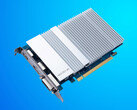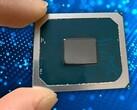Intel might still find itself in a rough spot with the launch of the Rocket Lake processors, but the company can turn things around quickly if the Alder Lake CPUs and the DG2 (Xe-HPG) gaming GPUs perform as planned. CPUs should be Intel’s strong suit, so we are actually more interested to see what the company can bring to the GPU table, since it has not really come up with competitive discrete GPUs in almost two decades. Raja Koduri, Intel’s Senior VP and Chief Architect for the architecture, software and graphics divisions recently teased the upcoming gaming GPUs in one of his tweets, and it looks like the GPU team is hard at work optimizing things for a smooth launch. Koduri does not actually mention the GPU name in his post. However, based on a few clues pointed out by the guys over at VideoCardz, it is highly likely that we are indeed looking at the DG2 GPU.
First of all, Koduri recalls he was working for Apple on a Crystal Well eDRAm module for the Iris Pro Haswell iGPUs back in 2012. Nine years later, his team from Apple is still mostly the same and the GPU they are working on now is more than 20 times faster than the 2012 model. In the 2021 pic, we can spot the actual graphics card that is connected to a motherboard (Alder Lake model perhaps?) via a PCIe riser. The graphics card appears to be equipped with a large heatsink plus a CPU cooler. There also are two PSUs, one for the GPU and one for the motherboard.
Probably the most important clue here is the information we see on the monitor in front of Koduri. Seems like the GPU is tested with the 3DMark suite, and all feature tests are there, including the DirectX DXR for ray tracing. We know there is no ray tracing support on the current DG1 (Xe-LP) models, so this has to be the DG2, which is confirmed to include hardware level ray tracing support. As a bonus, we can also spot a white board with some graphs on the left side, but the writings are hard to discern.
No launch date has been provided for the DG2 cards as of yet. These might release in desktop and laptop form towards the end of 2021 with all the chip shortages delaying things right now. The top-tier DG2 cards with 512 execution units and up to 16 GB of GDDR6 RAM on 256-bit buses are expected to match the RTX 3070 GPUs from Nvidia. Intel needs to price these models quite aggressively if it wants to have a chance against Nvidia and AMD.
Buy the Acer Swift 3X laptop with Intel Iris Xe Max on Amazon
























